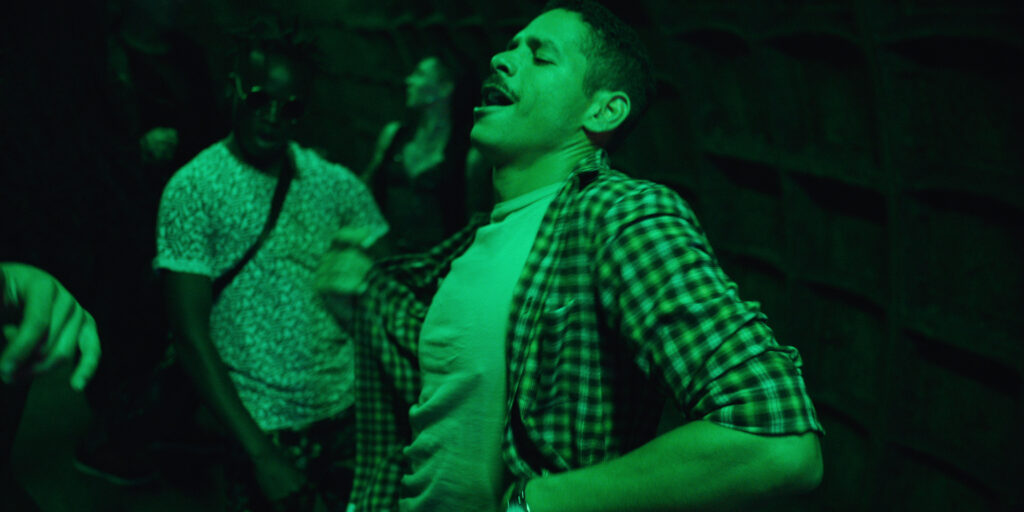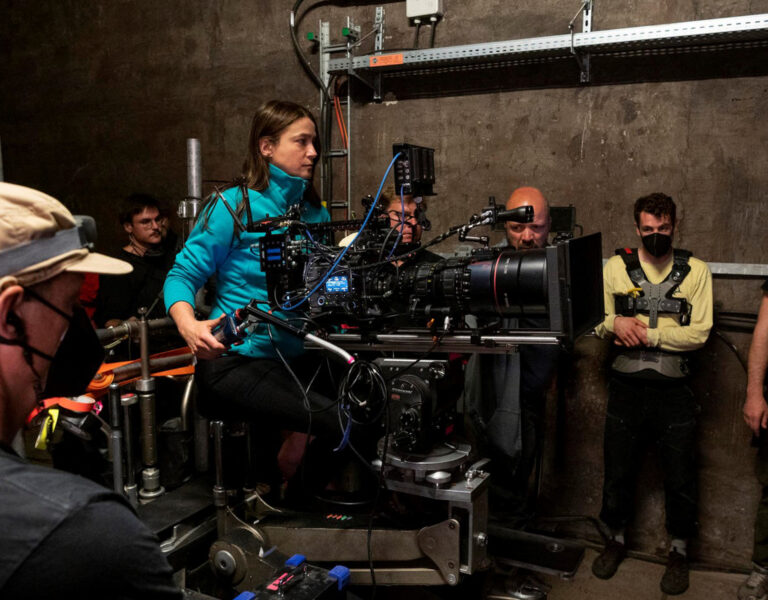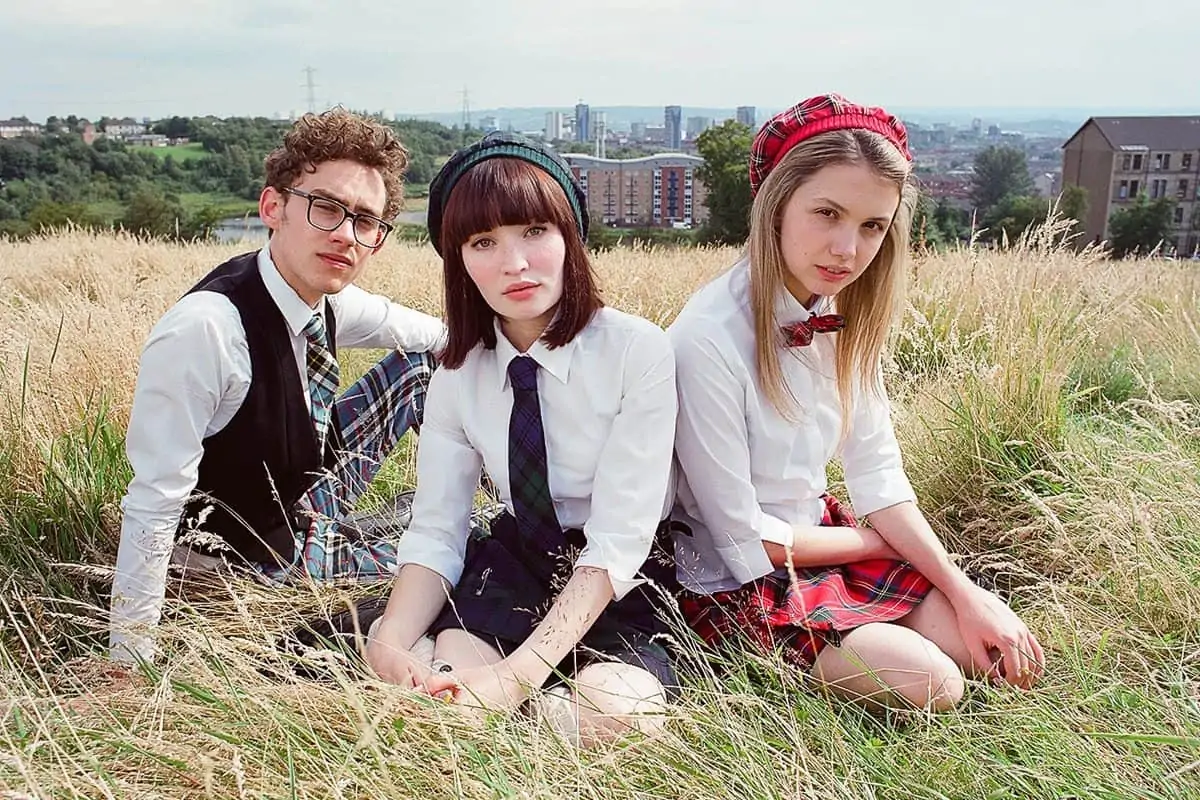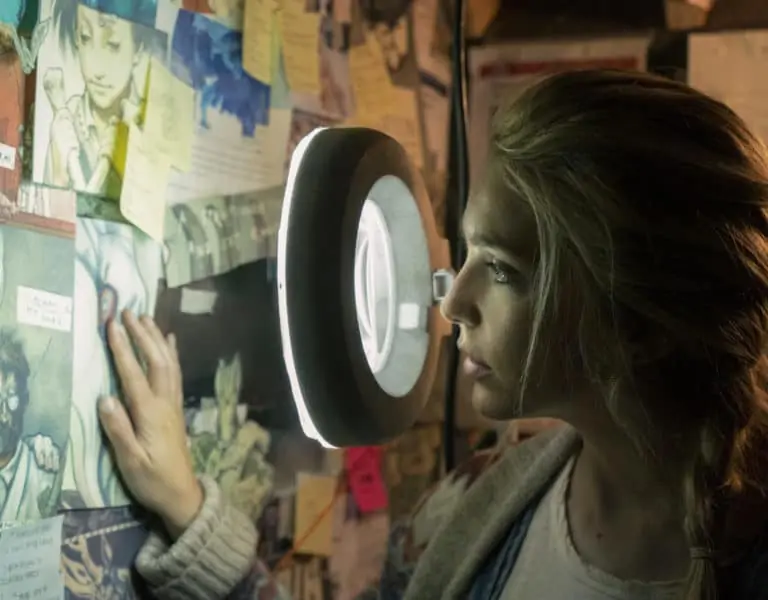GRANULARITY OF TIME
Ula Pontikos BSC’s work on “Nowhen” – the opening episode of season two of Russian Doll, the series merging death, rebirth, past trauma, and time travel – saw her receive an Emmy nomination. The cinematographer talks us through one of her favourite sequences from the second series which follows protagonist Nadia’s DMT trip in episode four, “Station to Station”.
Natasha Lyonne [co-creator, writer, director, and star of the series] and Alex Bueno, co-director, wanted to work with a female DP on season two of Russian Doll. At that point, I didn’t have any details about the script or the new season’s direction, but I was a big fan of season one. I thought the concept was fantastic and the whole cast and crew – including cinematographer Chris Teague – did an incredible job.
There was a moment of serendipity in the interview with Natasha and Alex when Natasha talked about the concept of the time loop and time travel, and the granularity of time. I just happened to be reading one of the books she referred to – Carlo Rovelli’s In Order of Time – which explores time being granular rather than linear. That allowed us to bond and form a relationship from an early stage as we both wanted to explore the themes of season two.

Conceptually, Russian Doll was interesting to me as it explored so many different topics, from the physics of time travel and how the brain works, through to family trauma. It’s not often that sort of project is given to you, and it was such an extraordinary production to help create.
We didn’t want to do things too differently to season one, so we went for the same set of lenses, the Leitz Summilux-C. Season one was shot on the 8K Red Monstro, Season two was set in multiple periods over the past century and I wanted an option of using a smaller sensor to create the various period looks, so I opted for Sony Venice. For the present day we shot Full Frame 6K on the Venice with the Leitz Summilux-C lenses and for the 1940s, 1960s and 1980s sections we dropped down to 4K and the smaller Super 35 sensor so we could shoot with older lenses – Baltars, Super Baltar primes, and the Cooke 25-250 Cine Varotal as the zoom lens. I spent a lot of time trying to figure out how best to achieve the impact of time travel between the ‘80s and modern day, and we always aimed to adopt the most truthful way of shooting. So, we chose a deeper stop – around a T-stop of 4 to create a deeper depth of field.
When filming in New York, I stayed in the Lower East Side of Manhattan – a 10-minute walk from Tompkins Square Park which was the heartbeat of the series. We used mainly tungsten lights – T20s and 24k Maxi Brutes – for the street scenes in the ‘80s and as New York is actually fairly bright. It was just a matter of using one source and letting other things to go into shadow. My New York gaffer Jerad Molkenthin, grip Greg Cahill, and their teams were fantastic and in tune with what I wanted to achieve through the lighting set ups. We also used old 1K or 2K ZIP lights with tungsten halogen double ended bulbs and soft boxes to achieve a slightly soft look which still had a harder quality than any LED light. It was all about using the technology of the time and appropriate techniques to create different looks, so when we went back to the ‘40s we used more Dutch angles and a lot of Parcans. For the present-day scenes, we mainly used an LED lighting package, always aiming to create as much impact as possible.

Associated with the experience
The psychedelic and drug-fueled DMT scene is one of my favourite sequences from series two as it is music video-like in terms of its style but veers off in many directions which required multiple rigs and techniques to achieve the required transitions. In the sequence, we follow an intoxicated Nadia Vulvokov (Natasha Lyonne) through a house party in Budapest, complete with green and pink strobe lights and spiraling camera movement as she revisits memories in a trippy combination of shots of her being engulfed by a bed, tumbling down stairs, being submerged in water, or being joined by a teenage version of herself.
To shoot the DMT sequence, we left New York and travelled to Budapest. The advantage of being in places like that is the crew are fantastic at building the rigs which formed such an important part of that scene. The DMT sequence is a death and rebirth where everything culminates in Nadia’s world, and it was all about that impact of the first transition when Nadia experiences the trip. For me, the sequence felt slightly like going back to the womb.
I wanted to create a disoriented feeling through that scene and Natasha came up with the idea that Nadia would sink into a bed. We initially talked about doing this in two shots – one when she falls through the bed and the other as a side shot where you see her falling – but I felt one shot would be more powerful. We devised a specialised rig to create the shot of the bed swallowing Nadia. As Nadia falls through the bed, we not only wanted the bed to come forward to her but also create the feeling she’s sinking through to the other side. Natasha was strapped to the bed rig which featured a slit, so she could “fall” through it and then when she emerges on the other side of the bed, the scene transitions into her falling into water which ties in with an element from season one and to the idea of dying. I also really wanted to use a point of view shot in this sequence as I think it’s important to figure out how to be in the character’s gaze. So when the bed swallows her, that shot blends into another VFX shot, but we also incorporated a shot from her point of view as she falls, so you feel more connected with her experience.

We used quite a lot of locations for this sequence. The location for the party scene was created in a big warehouse-style power station in Budapest, a huge oval space with an incredible roof. In the party we set out to create a level of confusion which Steadicam operator Devon Catucci, who has experience of working with Steadicam AR rigs, helped accomplish. Devon is extremely musical; I’ve worked on two projects with him and really appreciate his operating rhythm.
Devon is excellent at creating a floating movement and works well with actors as he is conscious of how they move. But the DMT sequence is like a music video and was meant to feel disorientating, so it was all about creating a movement around the characters when the world turns upside down.
In addition to the AR rig, 30 SkyPanels were placed inside a glass dome roof, all on DMX lighting controls, which were cued for strobing effect to create confusion, a feeling of wooziness and party vibes. The scheduling was tricky as there was so little time available, but our fantastic Budapest gaffer Attila Doczi, made it possible to realise our concepts.

To create the effect that Nadia is spinning we created another rig which we strapped Natasha to and shot on stage, using lighting transitions and strobing to once again create confusion. We then shot a plate of the underground bunker spinning which was combined in VFX with the shot of her spinning.
The psychedelic party scenes are also interspersed with brief train shots. While other parts of the series featuring the subway train were shot on stage in New York with assets displayed on two walls of LED screens along each side of the carriage, this particular scene in episode four was filmed five storeys down in an underground bunker where no one has shot in before. We used Asteras to create the strobing effect and shot some slow-motion elements at 72 frames per second with the AR rig.
Russian Doll marked my first collaboration with colourist Greg Fisher from Company 3, although we’d been talking about working together for years and he’s built LUTs for me in the past. For this series, we devised the LUTs early on when I was doing extensive camera tests, building a similar LUT to the one used in season one in terms of saturation, but which was also in line with how I like the contrast, shadow, and highlight to roll. The symbolic theme of Russian Doll is generally blue for Alan and red for Nadia, but the DMT sequence was meant to be different, so it didn’t feel right to work with red and blue. I looked at different combinations of colour swatches to figure out which two colours would be the opposite and green and pink just felt right for that scene.

Outside of the DMT sequence, the ‘80s LUT we devised had more contrast and we added film grain. The ‘80s look was also a little more cyan, cooler, and grungier as New York at that time, especially Lower East Side, was quite a rough place. The ‘60s look was much warmer, with less contrast and more of a tungsten vibe as fluorescent fixtures weren’t that popular then. The look for the 1944 scenes was our own version of two-strip Technicolour, so the colours were quite pink and bluey greens.
Audience interpretation is also at the core of the DMT scene. It had to have an emotional impact which was created with the help of careful editing by Todd Downing. The sequence is the result of combining multiple elements through planning to create a sense of confusion which was enhanced through skillful visual effects to blend the plates as well as Devon’s excellent work on AR Steadicam. One VFX shot where Nadia rolls down the stairs was filmed in an underground stairway to the subway in Budapest and then pretty much everything except the stairs was created in VFX, extending the scene to create a set of a New York subway.
While Russian Doll had multiple VFX elements, we aimed to do as much in camera as possible from lighting techniques through to production design trickery (headed up by Diane Lederman) and lo-fi rigs, to complement the strangeness of the story. Visual effects were used to elevate everything, especially in the DMT sequence and it was fantastic working with Gabriel Regentin, senior visual effects supervisor at Break+Enter, to realise this. Even when scheduling difficulties led to situations where it was not always possible to perfectly light every single green screen shot, Gabriel and his team delivered so the final results shine on screen.













